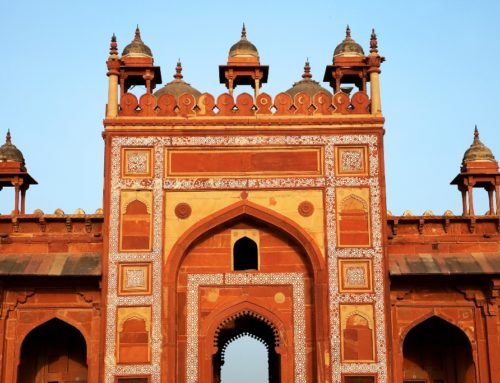Overview
- Features: Five-storeyed palace in Fatehpur Sikri fort
- Opening Times: Dawn to dusk, daily
- Best Time to Visit: Early weekday mornings
- Duration: Half a day (entire Fatehpur Sikri fort)
- Travelled By: Bus
- Cost: Indian/foreigner Rs 20/260 (entire Fatehpur Sikri fort)
- Address: Fatehpur Sikri, Uttar Pradesh, India
- Type: Palace
Author Reviews[display_rating_item_results rating_form_id=”2″ rating_entry_ids=”1″ show_category_filter=”false” show_options=”true” result_type=”star_rating” preserve_max_rating=”true” show_title=”false” show_count=”false” ]
Total Rating: [display_rating_result rating_form_id=”2″ show_count=”false” show_rich_snippets=true] [accordions load=”1″] [accordion title=”User Reviews” last] [display_rating_item_results rating_form_id=”5″ show_options=”true” result_type=”star_rating” preserve_max_rating=”true” show_title=”false” show_count=”true” show_rich_snippets=true] [/accordion] [accordion title=”Add Review”][display_rating_form show_email_input=”true” show_comment_textarea=”true” show_name_input=”true” rating_form_id=”5″] [/accordion] [/accordions]
Summary
The Mughal emperor, Akbar chose Fatehpur Sikri to be his capital between 1571 and 1585 and built his fort and palaces on the ridge overlooking the city. Panch Mahal Fatehpur Sikri is one of the palaces built by Akbar within his fortified capital. Along with the other palaces, it formed the private living areas for the emperor and his queens.
Panch Mahal Fatehpur Sikri
The Mughal emperor, Akbar chose Fatehpur Sikri to be his capital between 1571 and 1585 and built his fort and palaces on the ridge overlooking the city. Panch Mahal Fatehpur Sikri is one of the palaces built by Akbar within his fortified capital. Along with the other palaces, it formed the private living areas for the emperor and his queens.
Panch Mahal is located in the centre of the fort overlooking the Pachisi Courtyard and Anoop Talao (Ornamental Pool) below. An elegant, airy five-storeyed open sandstone pavilion, its unique and impressive architecture makes it stand out among the palaces in the fort. Each floor is smaller than the one below, rising to a single domed kiosk on top. It was built on the pattern of a Buddhist temple which showcases the religious tolerance that Akbar had towards all faiths and religions. The horizontal line of this terraced building is emphasized by wide overhanging eaves (for providing shade), parapets broken by the supporting pillars of which there are 84 on the ground floor (the magic number of seven planets multiplied by 12 signs of the zodiac). The 56 carved columns on the second floor are all different and show Hindu influence.
[singlepic id=1043 w=720 h=560 float=center]
The Panch Mahal is believed to have been a pleasure palace which the emperor used for relaxation and entertainment purposes. The Panch Mahal also stands close to the zenana or women’s quarters which supports the fact that it also acted as a pleasure palace for the emperor’s queens and their attendants who would watch the games and music shows being held at Anoop Talao below and savour the cool evening breezes without being seen.
Originally dampened scented khuss (grass screens) were hung in the open spaces, which provided protection from the heat and sun, as well as privacy for the women who used the pavilion. Its decorative screens were probably stolen after the city was abandoned.





